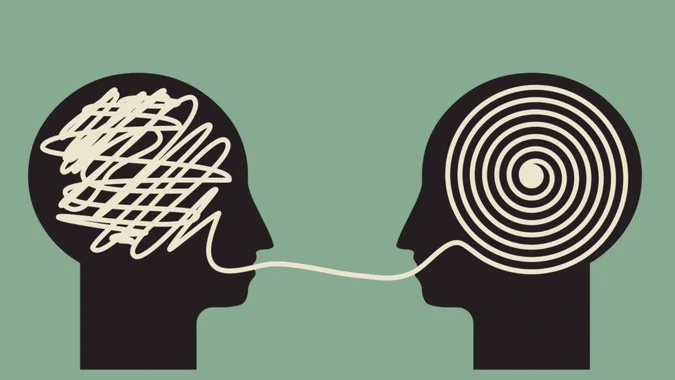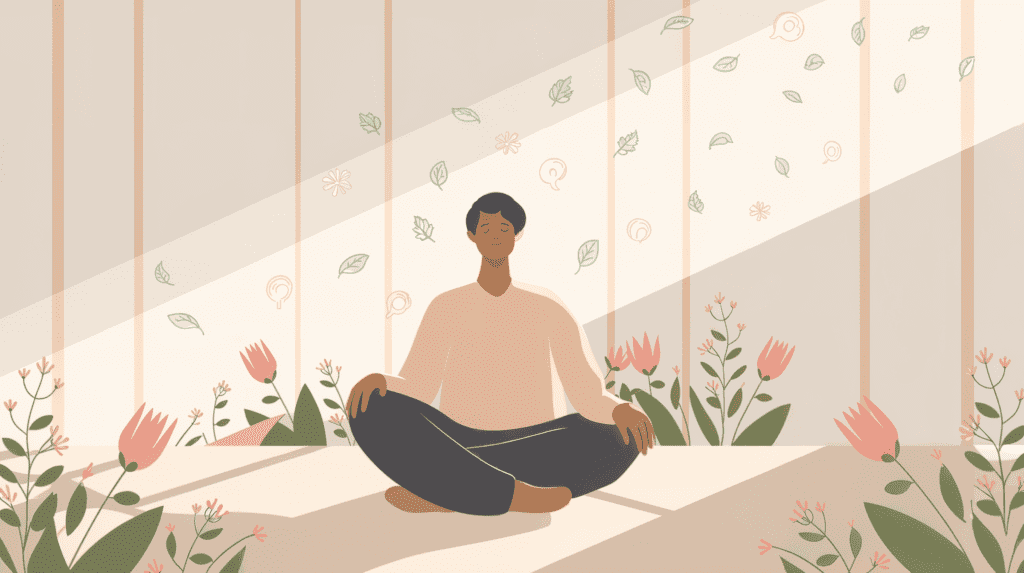Feeling overwhelmed, anxious, or stuck in fight-or-flight mode? Learning how to calm your nervous system is one of the most powerful tools for emotional resilience and mental well-being. Whether you’re recovering from chronic stress, trauma, or just need fast relief from daily anxiety, these proven nervous system regulation techniques can help you restore balance, feel safe in your body, and regain a deep sense of calm. From breathwork and vagus nerve stimulation to grounding exercises and mindful movement, these strategies activate your parasympathetic nervous system—your body’s natural “rest and digest” response.
Table of Contents

⭐ Top 5 Ways to Calm Your Nervous System Fast
1. Deep Diaphragmatic Breathing
➡ Slow breaths signal safety to your brain. Lowers heart rate in minutes.
✅ Do: 4 counts in, 6 counts out. Repeat 5x.
2. Mindfulness Meditation
➡ Switches off fight-or-flight. Strengthens brain areas for calm and focus.
✅ Try: 5 minutes of breath awareness daily.
3. Progressive Muscle Relaxation (PMR)
➡ Relieves body tension = signals to your brain you are safe.
✅ Tense and relax each muscle group from toes to head.
4. Safe Social Connection
➡ Eye contact, touch and conversation boost oxytocin and calm your nerves.
✅ Call a friend. Hug someone. Smile.
5. Gentle Movement (Yoga / Tai Chi / Stretching)
➡ Reduces cortisol. Activates the parasympathetic (rest & digest) system.
✅ Try: 10 minutes of slow, mindful stretching.
There’s no quick fix for chronic stress, but there are nervous system regulation techniques that truly work when practiced consistently. Your nervous system is designed to protect you—but in a world filled with overstimulation, trauma, and constant pressure, it can get stuck in survival mode. That’s where tools like somatic exercises for anxiety, grounding techniques, and vagus nerve stimulation come in. These practices help rewire your brain and body for safety, signaling that it’s okay to let go and return to a place of calm.
When you activate your parasympathetic nervous system, you’re essentially telling your brain: you’re safe now. This system controls your body’s rest-and-digest functions and plays a key role in regulating heart rate, digestion, and emotional balance. The more often you tap into it—through breathwork, movement, or mindful connection—the easier it becomes to feel safe in your body.
The key is not doing everything at once, but choosing just one or two techniques that resonate with you. Whether it’s a five-minute grounding routine or a daily walk in nature, building these habits will help you calm your nervous system over time. As you learn to listen to your body’s cues and offer it what it needs, you’ll notice that feeling of calm becoming more accessible—more yours.

What Causes Nervous System Dysregulation?
Nervous system dysregulation doesn’t happen overnight. It’s often the result of long-term exposure to chronic stress, unresolved trauma, poor sleep, or even the relentless overstimulation of modern life. When your brain and body don’t get consistent signals of safety, they can default to survival mode—keeping you stuck in a state of sympathetic nervous system overload.
This is the body’s fight-or-flight response working overtime. You might feel constantly on edge, emotionally reactive, easily startled, or mentally exhausted—but unable to truly rest. Over time, this chronic fight-or-flight pattern can take a serious toll, making it harder to concentrate, sleep, digest, or feel connected to others. Understanding the root causes of this dysregulation is the first step in gently guiding your system back into balance. Learning to calm your nervous system allows you to break that cycle—restoring a sense of safety, improving emotional resilience, and helping your body remember what it feels like to truly relax.

🛠️ 25 Tools to Calm Your Nervous System
| Tool | How it Helps | Try This! |
|---|---|---|
| 🌬 Box Breathing (4-4-4-4) | Balances CO2 & O2. Reduces stress in 1-2 minutes. | Inhale 4 – Hold 4 – Exhale 4 – Hold 4. |
| 🖐 5-4-3-2-1 Grounding | Anchors you in the present moment. Great for panic. | Name 5 things you see, 4 you feel… |
| 🎧 Binaural Beats / Calm Music | Promotes alpha/theta brainwaves = relaxed state. | Use headphones. Try 432Hz sounds. |
| 🧊 Cold Water Splash / Ice Pack | Activates vagus nerve. Lowers heart rate fast. | Splash cold water on face or hold ice on neck. |
| 🌿 Vagus Nerve Stimulation (Gargle) | Stimulates the calming vagus nerve. Reduces fight-or-flight. | Gargle water for 30 seconds. Hum or chant. |
| 🐾 Pet an Animal | Increases oxytocin. Lowers stress hormones. | Spend 5-10 minutes with your pet. |
| ✍️ Journaling (Expressive Writing) | Clears mental clutter. Processes emotions. | Write for 5-10 min about your feelings. |
| 🌳 Nature / Forest Bathing | Lowers cortisol & blood pressure. Boosts immune function. | Spend 20+ mins outdoors, barefoot if possible. |
| 🧸 Weighted Blanket | Deep pressure stimulates parasympathetic nervous system. | Use a blanket that’s 10% of body weight. |
| 🕯 Aromatherapy (Lavender, Chamomile) | Activates limbic system. Signals safety & relaxation. | Diffuse oils or inhale directly. |
| 🔥 Safe Touch (Hug, Self-Hug) | Deep pressure and warmth soothe the nervous system. | Hold yourself or someone you trust for 20 seconds. |
| 🕉 Chanting / Humming | Stimulates vagus nerve. Regulates breath & heart rate. | Hum or chant “Om” for 2-3 mins. |
| 💦 Stay Hydrated | Dehydration increases anxiety & cortisol. | Sip water regularly, aim for 8 cups/day. |
| ☀️ Sunlight Exposure | Regulates circadian rhythm, boosts serotonin. | Get 10-15 mins of morning sun. |
| 🥑 Balanced Nutrition (Blood Sugar) | Stable blood sugar = stable nervous system. | Eat protein + fiber + healthy fats regularly. |
| 🧠 Bilateral Stimulation (Tapping) | Engages both hemispheres. Calms trauma response. | Tap alternately on knees/shoulders. |
| 🛏 Sleep Hygiene | Rest restores parasympathetic dominance. | Regular bedtime, no screens 1 hr before. |
| 🖼 Visualization / Guided Imagery | Creates calming brain states via imagination. | Imagine a safe, peaceful place for 5 mins. |
| 🎨 Creative Expression (Art, Music) | Flow state reduces stress hormones. | Paint, draw, play music for 20 mins. |
| 🚶 Rhythmic Movement (Walking) | Repetitive motion = calming sensory input. | Take a 10-min slow walk. Swing your arms. |
| 🫂 Co-Regulation with People | Nervous system “syncs” with calm others. | Spend time with supportive people. |
| 🔄 Heart Rate Variability Training | Increases resilience to stress. Regulates heart & breath. | Use HRV biofeedback apps/devices. |
| 🧘♂️ Tai Chi / Qigong | Combines breath, movement & mindfulness. | Practice 10-15 mins daily. |
| 🔔 Meditative Chant / Mantra | Focuses mind, vibrates vagus nerve. | Repeat a calming word or sound aloud. |
| 🏖 Body Scan Meditation | Scans for & releases tension = brain signals safety. | Close eyes, focus on each body part. |
✅ Pro Tip:
Pick 1-2 practices you like & do them consistently! The nervous system LOVES routine.
Try combining breath + movement + grounding for maximum calm.

Conclusion
Taking care of your nervous system isn’t a luxury—it’s the foundation for your overall well-being. Whether you’re using breathwork, gentle movement, or simply learning to pause and listen to your body, every small step counts. The more you practice these nervous system regulation techniques, the easier it becomes to feel grounded, connected, and safe within yourself. If you’re curious about how this process works on a deeper level, check out this article by The Cleveland Clinic about how the Vagus Nerve stimulation may be a key factor in fighting anxiety and stress. It’s a fantastic blend of science and self-care.


